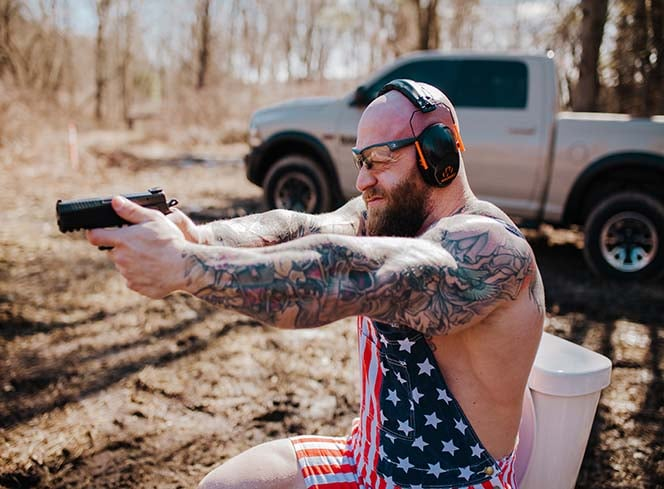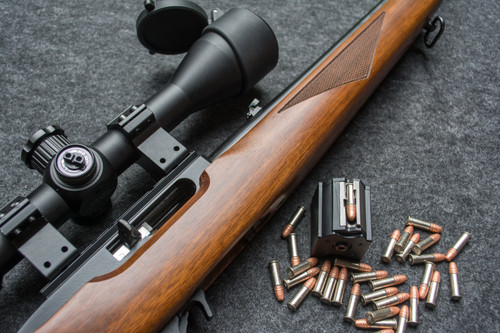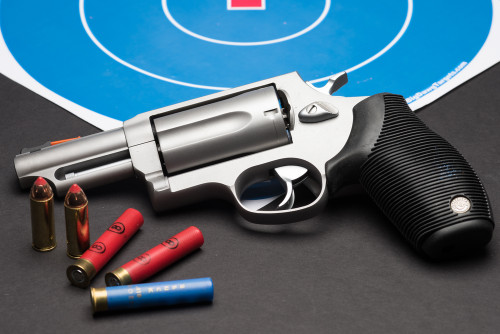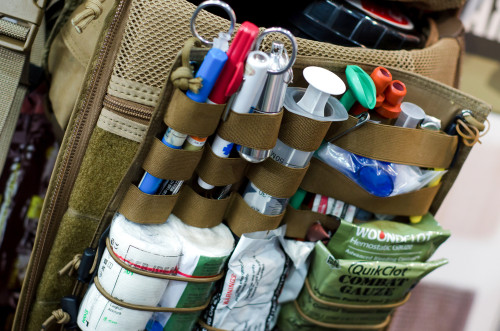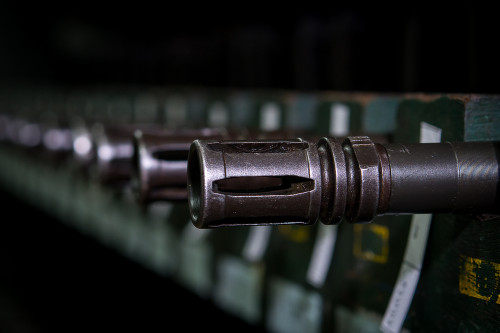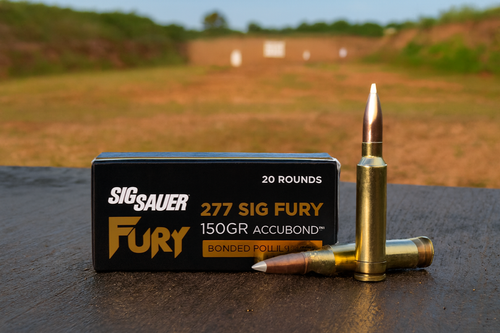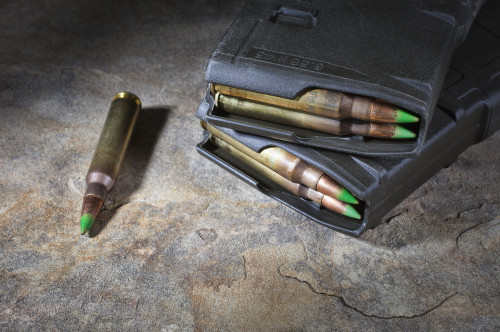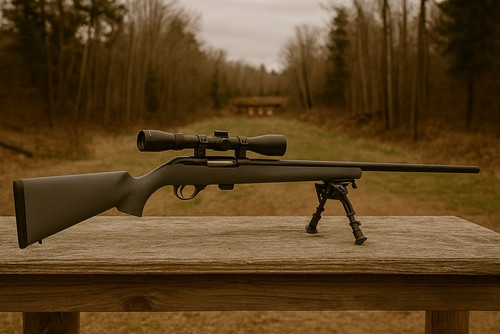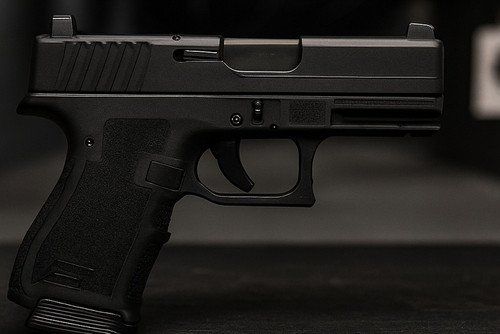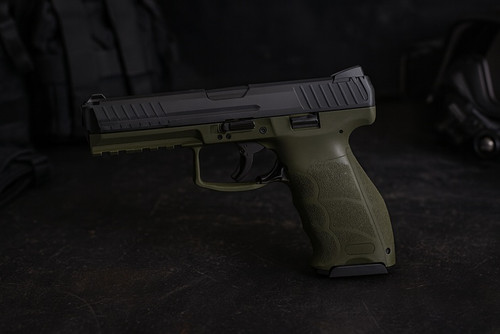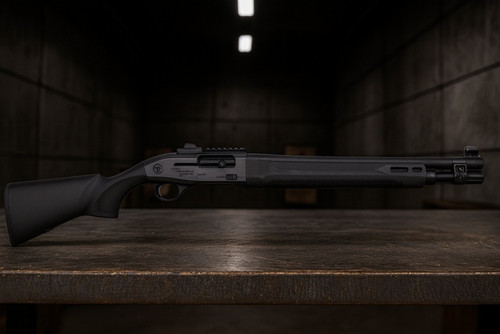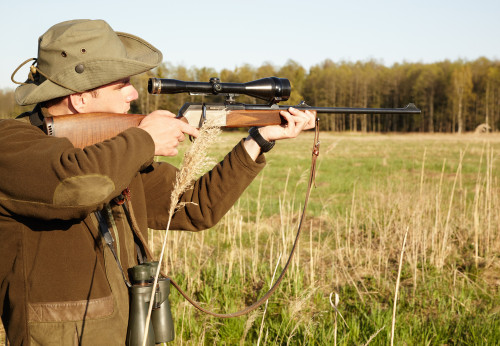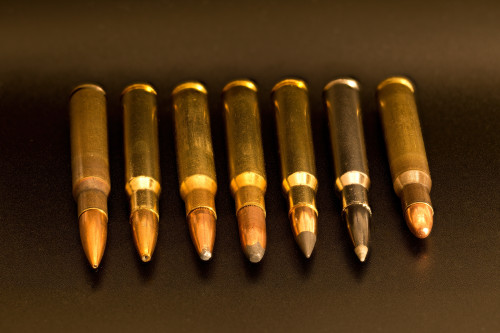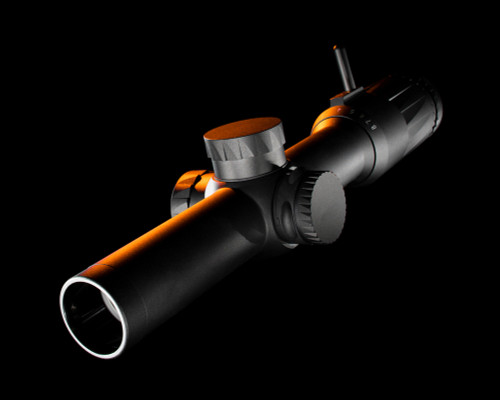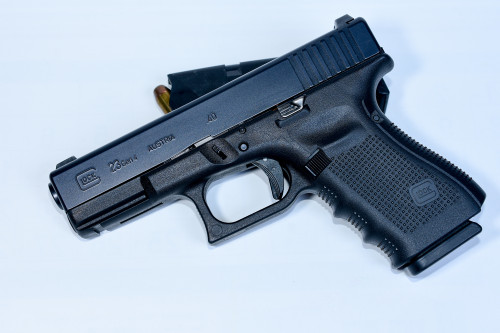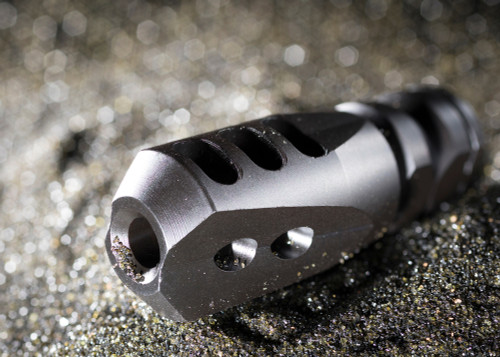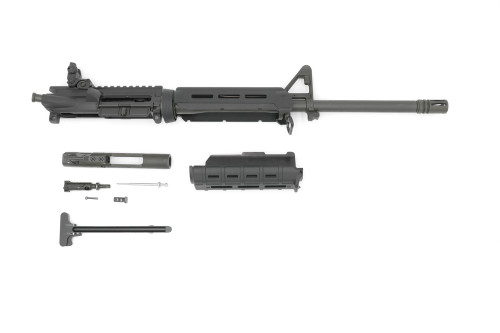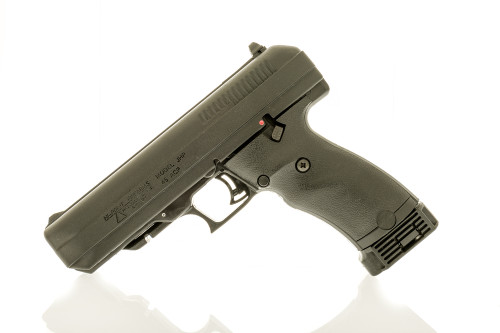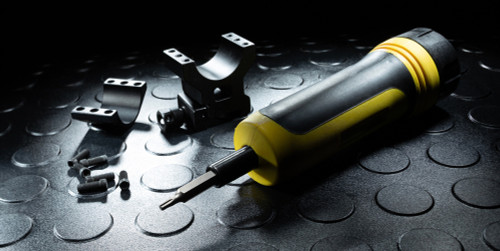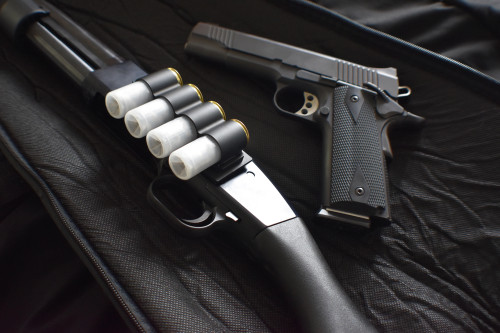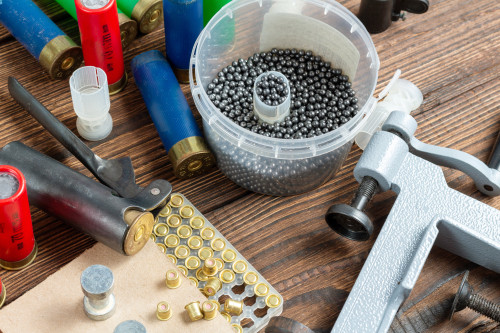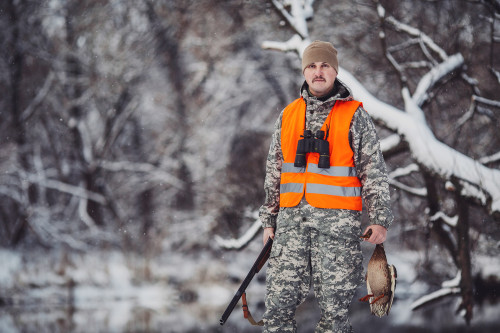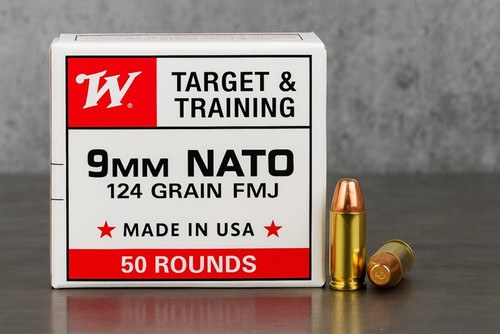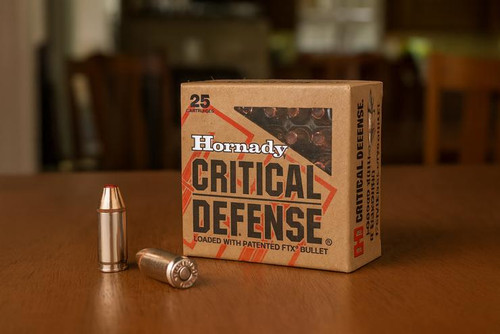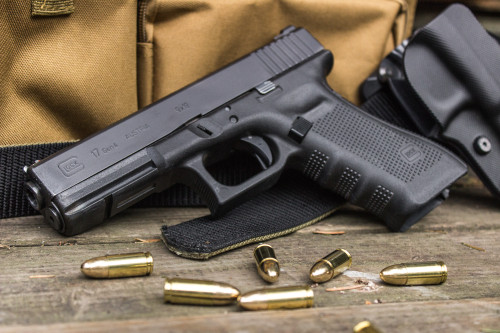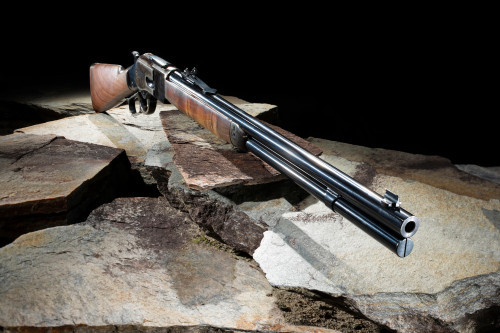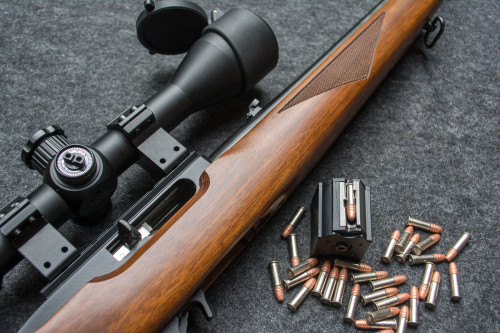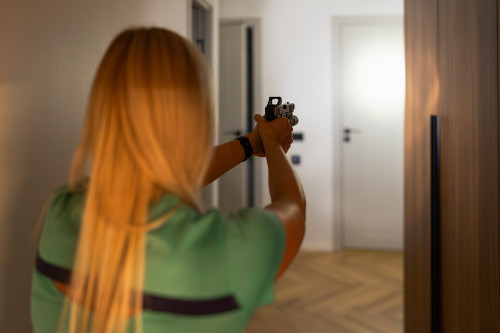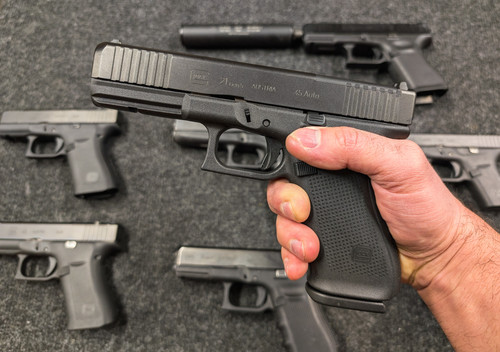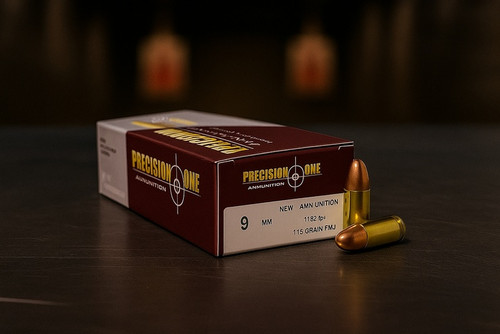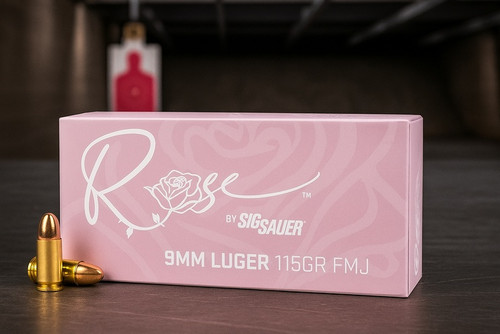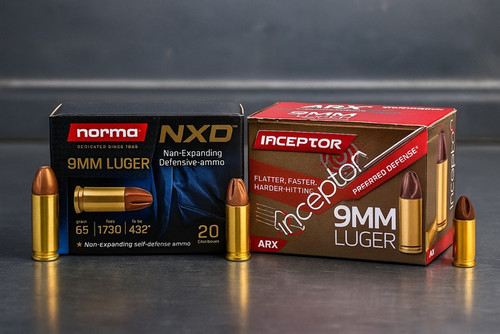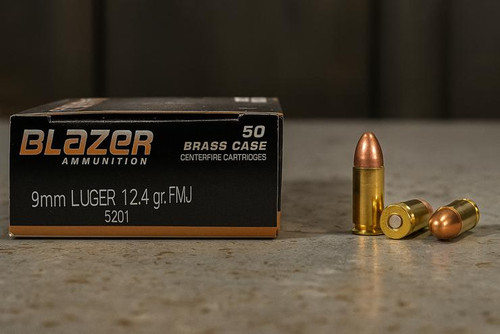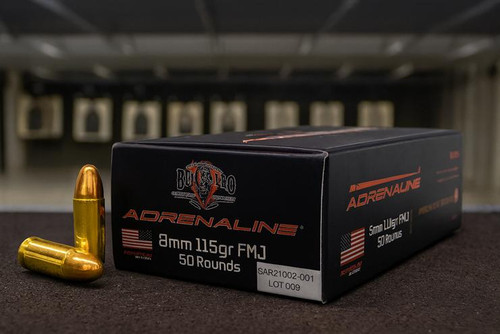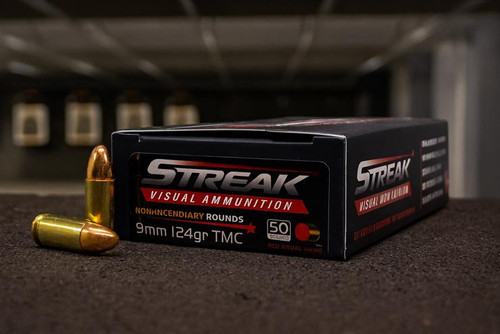Which round is better: .22 Long Rifle (LR) or 9mm? It’s a common question tossed around among gun enthusiasts. While amateurs will argue until they’re blue in the face, pros will ask the obvious next question: For what?
As a general rule, 9mm is better for self-defense and .22LR is better for almost everything else. Together they form a perfect symbiotic relationship where one round makes up for the shortcomings of the other — which is why they are the two most popular rounds in the world.
Comparing these two calibers is like comparing steak and ice cream. The issue is not whether they’re good, but what role each plays on the menu. They’re both good for different reasons, which is why they’ve stood the test of time.
However, it’s important to understand the underlying principles of why this is true and to know the advantages and disadvantages of each round. In this article, we’ll compare the details of these two calibers, discuss their strengths and weaknesses, and offer our assessment of which caliber is best for specific situations.
Our Comparison
There are countless versions, designs, specs, and brands of both the 9mm and the .22LR (which can often make comparison articles like this overly generalized or excessively long). To avoid this problem, we’ll compare two specific rounds from our store.
For the .22LR, we’ll use the Remington Thunderbolt 22 Long Rifle 40 Grain Lead Round Nose. This is a standard 40-grain .22 LR round designed for hunting small game.
For the 9mm, we’ll use the Hornady Critical Duty 9mm Luger +P 135 Grain FlexLock. This round is specifically designed for self-defense.
There is nothing particularly special about these rounds. These are solid examples of the two calibers in question, which makes them perfect for a comparative case study. By understanding the differences between these two specific rounds, we can gain a general understanding of the roles both round designs can play in the gun owner’s arsenal.
Let’s also compare apples to apples and assume that you’re shooting both the .22LR and the 9mm from a handgun. Despite the name “long rifle,” there are several handguns chambered for .22LR such as the Ruger Mark IV and the Glock 44. Of course 9mm is traditionally a round meant for handguns such as the Glock 17 or the SIG P320, but it can still be used with rifles (pistol-caliber carbines) such as the SIG MPX.
History of .22LR and 9mm
Before we talk about how these rounds stack up against each other, let’s look at how we got here.
History of the .22 Round
The .22 was developed in the late 19th century as a low-cost ammo solution for use in smaller, more affordable firearms. It quickly gained popularity for target shooting and small-game hunting and has evolved into the ultimate low-cost ammo solution.
Over time, the round has continued to evolve and improve, but it remains one of the most popular ammo types in the world because it’s cheap, plentiful, and dependable. It is the duct tape of the ammo world, because it basically solves any problem with a little creativity.
There are a wide variety of .22 rounds available, including subsonic and hypervelocity versions, but the .22LR is by far the most common and the one most shooters are familiar with.
History of the 9mm Round
The 9mm round (also called the 9x19mm, the 9mm Luger, or the 9mm Parabellum) was developed in 1902 by a German arms manufacturer specifically for use in combat. Parabellum means “prepare for war.”
The 9mm eventually became widely used by militaries and law enforcement organizations around the world due to relatively low recoil, moderate stopping power, and high carrying capacity.
Today, the 9mm is the most popular handgun caliber in the world for military, law enforcement, and civilian self-defense applications.
.22LR vs .9mm Compared
Let’s break down exactly how these rounds compare based on several characteristics.
Caliber
The term “caliber” can refer to both the diameter of a bullet and the internal diameter of a gun barrel (also called the bore). Just to make things as confusing as possible, caliber can be expressed in either inches or millimeters and sometimes both.
The 9mm is 0.35 inches in diameter, making it about 40% larger than the .22LR. In case it’s not obvious, the “.22” in the name refers to the 0.22-inch diameter of the bullet.
Cost
While not exactly a feature of the round itself, the cost difference between these rounds helps to provide perspective on just how different these rounds are. Yes, they are both ammo, but that’s pretty much where the similarity ends.
Our 9mm example is generally sold in boxes of 25 rounds for around $25.00. If we buy in bulk, we can get 500 rounds for about $475.00. Of course, market prices are subject to change, but this figure gives you a general idea of the cost of a high-quality 9mm hollow-point: $0.95 per round.
In contrast, our .22LR example is sold in boxes of 500 rounds for around $60.00. That’s $0.12 per round — more than eight times cheaper than the 9mm. Knowing this will help put everything else we learn about these rounds in context.
Type
Bullet design varies between round types, each with unique characteristics related to stopping power, penetration, aerodynamics, shape retention, and more.
Our 9mm is a hollow-point round, which means the bullet has a lead core partially jacketed in metal. The bullet tip is deliberately exposed so the bullet will expand on impact and deliver maximum energy to the target. This design is relatively complex and helps contribute to the higher cost.
On the other hand, our .22LR has a round nose bullet, which means the bullet is made entirely of wax-coated lead with no metal jacket. This is a simpler and cheaper design. The tradeoff is that the round deforms much easier than rounds coated in harder metals.
Power
When you whittle it down to its core, the primary functional difference between the .22LR and the 9mm is power, which is a function of muzzle velocity and bullet mass. A heavier bullet traveling faster will have more power than a lighter bullet traveling at the same speed.
To understand power, first we need to look at the mass of a bullet, which is measured in “grain.” Our 9mm round is 135 grain (about 8.7 grams), and our .22LR round is 40 grain (about 2.6 grams). This means our 9mm round is more than three times heavier than our .22LR round.
Next, we need to look at muzzle velocity. This is the speed the bullet is traveling at as it exits the barrel. Our 9mm round has a muzzle velocity of 1110 feet per second (fps), and our .22LR round has a muzzle velocity of 1255 fps — roughly similar speed.
But even though the speed is similar, the 9mm has more than three times the mass and thus has a muzzle energy of 369 foot-pounds (ft-lbs). In contrast, our .22LR has a muzzle energy of just 140 ft-lbs. In other words, the 9mm is over 60% more powerful than the .22LR.
Of course these numbers vary across different versions of these rounds, but this highlights the scope of the situation: every 9mm round impacts with more than twice the power of the .22LR. Multiply that across an entire magazine and the difference in damage delivered is significant.
Recoil
The flip side of power is recoil. The more powerful the bullet, the stronger the recoil. This means the 9mm has significantly more recoil than the .22LR, making it harder to control (especially for people who are physically weak).
While a handgun is inherently less stable than the rifle, you’ll still notice a real difference in recoil between the 9mm and the .22LR when firing from any handgun. The .22LR has significantly less recoil, making it easier to maintain accuracy with a handgun at the same range.
But this doesn’t mean 9mm is necessarily a high-recoil round — many shooters are laser-accurate with 9mm firearms, even at long ranges.
Accuracy
When it comes to accuracy, the primary factors are the gun and the shooter. A properly manufactured round will generally go where you send it, but this issue is more complicated by distance.
No bullet flies perfectly straight. All bullets travel on an arcing trajectory to some degree as they gradually fall from the barrel height to the earth. However, some bullets fall faster than others, which shooters refer to as “drop.” Knowing this, a shooter can compensate for drop for targets at greater distances. However, the round with the least drop (the flatter trajectory) will generally be considered more accurate because there is less guesswork required by the shooter.
If zeroed at 50 yards, both our 9mm and our .22LR have a drop of about 6.5 inches over 100 yards. This means if you’re in the end zone of a football field and you’re trying to hit the opposite goal post, you have to aim six inches higher to bullseye your target.
When we factor in less recoil, we can safely say that the .22LR is functionally more accurate at a distance. At close range, however, both rounds are equally accurate.
Ballistics
Ammo ballistics refers to the ability of a bullet to overcome air resistance and is described with a figure called the ballistic coefficient. The math here is complicated, but basically the higher the number, the easier the bullet can cut through air. Bullet mass, muzzle velocity, air resistance, etc. are all factored into the equation.
For example, the most advanced low-drag bullets will have a ballistic coefficient of 1.0 or higher, which means they’re as aerodynamic as bullets can get and air resistance has a minimal effect on trajectory.
However, this factor is most significant for long-range shooting. Both of our example rounds (and really, all 9mm and .22 rounds) are effectively short-range rounds, negating the importance of ballistics.
Nevertheless, our .22LR has a ballistics coefficient of .116 due to the round-nose design and the simple fact that the bullet doesn’t have enough mass or velocity to cut through air at long distances.
Our 9mm round has a slightly higher coefficient of .195 due to higher muzzle energy. But this is still low, by design. This bullet is meant to travel short distances and stop when it’s in a target. It was never designed to be aerodynamic over long ranges.
Loudness
There’s no way around it: the 9mm is much louder than the .22LR. Measured in decibels (dB), the 9mm produces an average of 165 dB of noise while the .22LR produces just 140 dB. Both of these are loud enough to permanently damage your hearing.
A 25 dB difference might not seem like much, but remember that the decibel scale is exponential, meaning every 10 dB increase is 10 times louder. So, in this case, the 9mm is 25 times louder than the .22LR.
Side note: Always wear hearing protection when you shoot, and get a suppressor if you can to significantly reduce the loudness of your gun. Your ears will thank you over the long term. Plus, using a suppressor with .22LR ammo is just ridiculously fun. It’s as close to “Hollywood quiet” as you can get.
Primer System
Generally, .22LR rounds use a rimfire primer while 9mm rounds use a centerfire boxer primer. Rimfire means that the entire base of the round is primed, then triggered when any part of the base is crimped by the firing pin. The design requires a protruding rim around the base.
The idea here is that the .22LR requires less precision to manufacture, but the tradeoff is reduced durability. For $0.12 a round, however, the tradeoff tends to be worth it.
In contrast, the 9mm uses a centerfire primer, where the primer is positioned in the center of the baseplate and triggered when struck by a firing pin. This system is more reliable, durable, and longer lasting, but requires more precision in manufacturing (which raises the price).
Sometimes you can’t afford to have a misfire or a dud.
Shelf Life
The primer system also has a significant effect on how long these rounds last in storage. The centerfire design of the 9mm is inherently more durable, meaning that properly stored 9mm rounds can last for decades.
In contrast, the .22LR’s rimfire design is prone to decay due to its greater simplicity and less precision in manufacturing. You can expect about one or two years’ shelf life most of the time.
Capacity
Both rounds are known for their high capacity, though for different reasons. Magazines for 9mm guns have a high capacity because the round is relatively small compared to .44 or .45, but they can be double stacked due to the centerfire primer (meaning there’s no edge around the base of the round).
In contrast, .22LR also can be high capacity because the rounds are tiny. But they cannot be double stacked due to the rim around the base.
Availability
The 9mm and the .22LR are two of the most popular rounds on earth, widely available in a number of versions to suit various purposes. Wherever you go, and whatever you’re doing, you’ll probably be able to restock these rounds with ease.
This is important to know because it means in a crisis, these are the rounds that will be available. Depending on rare or exotic ammunition to stock your cabinet is just begging to have Murphy’s law ruin your day.
Danger
Finally, it’s important to remember that both of these rounds can kill. This might seem obvious when you say it out loud, but it can often get lost in esoteric discussions about ballistics and stopping power. If the round hits on-target, both are equally deadly.
The difference in danger and deadliness drops off differently for each round, but an on-target bullet can be lethal, no matter the caliber. Don’t ever lose respect for either of these rounds.
Comparison Summary
This chart summarizes the differences between our two example rounds. While we focused here on two specific rounds, these facts and figures can be generalized to create a broad comparison between the 9mm and the .22LR.
Ammo Comparison: .22LR vs 9mm
| Hornady Critical Duty 9mm HP | Remington Thunderbolt .22LR | |
|---|---|---|
| Caliber | 0.35 in (9.0 mm) | 0.22 in (5.6 mm) |
| Cost (500 rds) | $475.00 ($0.95 per round) | $60.00 ($0.12 per round) |
| Type | Hollow-Point | Round Nose |
| Grain | 135 gr (8.7 g) | 40 gr (2.6 g) |
| Muzzle Velocity | 1110 fps | 1255 fps |
| Muzzle Energy | 396 ft lb | 140 ft lb |
| Drop @ 100 Yards | -6.5 in | -6.5 in |
| Ballistic Coefficient | .195 | .116 |
| Loudness | 165 dB | 140 dB |
| Primer | Centerfire | Rimfire |
| Shelf Life | 20+ years | 1 to 2 years |
| Capacity | High | High |
| Availability | High | High |
Situational Comparison
Now you know the technical differences between the two rounds, but so what? The important question is how can we use this knowledge to find the right round in the right conditions.
Let’s compare some common situations to see which round is best for which scenario:
Self Defense
The 9mm round has more stopping power and better reliability compared to the .22LR — two critical factors in a self defense situation.
The 9mm was specifically designed for killing, which makes it ideal for self defense. That might seem ugly, but gunfighting for your life is an ugly business. Let's hope you never have to do it.
Accuracy and Stopping Power
Stopping power specifically refers to the ability of a firearm to disable a target. Unlike the definition of power (muzzle energy) described above, there’s no mathematical formula to determine stopping power in the real world — although the two are clearly related.
When shooting these rounds through a handgun, both stopping power and accuracy are important to consider. The .22LR has less recoil, making it easier to control, especially for those who have less tolerant wrists or carpal tunnel syndrome. However, the .22LR doesn’t have as much stopping power as the 9mm. This is the inherent trade-off when choosing either of these rounds for your handgun.
How Many Rounds Does it Take to Stop an Attacker?
It depends. Are you being attacked by a crazed elderly man? A professional athlete? What about a grizzly bear? It might take one well-placed shot, or maybe all the rounds you have won’t be enough. It’s an impossible question to answer without considering every unique factor present in the scenario.
The only honest answer is: you will know how many rounds it takes to stop an attacker when the attacker is no longer a threat.
With that said, it is possible to instantly stop an attacker by disabling the central nervous system (CNS). That doesn't mean every headshot will stop an attacker, it just means the only way to stop an attacker instantly is with a headshot.
To be fair, the .22LR can effectively achieve CNS shutdown at close range, but this requires flawless accuracy — in the middle of the night, when you were sound asleep 30 seconds earlier, and when you haven't been to the range in a year. You can see the problem.
Faced with this scenario, it's obvious that stopping power is the critical component when choosing a self-defense round. Out here in the real world, stopping an attacker likely will require overwhelming, cumulative damage. We need to make sure every round wounds as much as possible to achieve that. You may have literal seconds to do enough damage to end the encounter. Fractions of a second matter.
What if I Can’t Handle a Handgun at All?
In almost all situations, the handgun is better than the rifle for self defense because it’s more easily maneuvered in tight spaces (such as your hallways and around corners). However, there could be situations where the defender is just not physically capable of managing a handgun effectively (due to recoil or other factors).
In this case, the 9mm is probably the best pick. With the rifle being a more stable platform in general, you won’t have to sacrifice stopping power in favor of low recoil. Most people can handle a 9mm pistol-caliber carbine just as easily as they could a rifle chambered for .22LR.
That said, every situation is different. The only way to know what’s best for you is to test your abilities at the range. Use the round you can fire accurately, safely, and effectively.
Hunting
Between the 9mm and the .22LR, the latter is optimal for hunting small game if you have to hunt with a handgun. Of course, you’re not taking down a moose (or even a deer) with a .22LR, but compared to the 9mm, it’s the better choice. You can effectively hunt most small game without destroying the hide or the meat.
The flip side here is that you still might want to carry the 9mm for personal protection whenever you’re out hunting in the wild. Whether defending yourself from humans or animals, the 9mm gives you a better chance for survival than solely depending on the .22LR.
Training
Low cost, limited recoil, and moderate noise make the .22LR the ideal round for developing shooting skill. Plus, shooting fundamentals are the same whether you’re using a .22LR, a 9mm, or a .50 caliber cannon. Better to learn with the cheaper round before graduating to more expensive systems.
Survival
Survival is about versatility and being prepared for the unknown. If you have only one gun, it should shoot the .22LR. This round has the widest variety of applications and would be the most useful in a survival scenario.
But if you need or are able to have a second gun for personal defense, it should be a 9mm. The .22LR plus 9mm combo is the ideal loadout for any end-of-the-world/zombie apocalypse scenario, as you are covered for both small game hunting and close-range self defense.
Final Thoughts
The most important takeaway here is that neither the .22LR or the 9mm is better than the other. While the .22LR is perhaps best for long range shooting and hunting, and the 9mm for self defense, they both fill specific roles in the gun owner’s arsenal. Just like the hammer and screwdriver in your toolbox, it’s best to have both. Familiarize yourself with the advantages and disadvantages of both calibers and train accordingly.
If you’re in the market for .22LR rounds, 9mm rounds, or both, Pro Armory has you covered. We offer several calibers in small boxes and bulk cases, all shipped to you for the lowest price possible. As a veteran-operated company, we stand by every round we sell because we know your life may depend on it.
Check out what’s now in stock at Pro Armory to find the right ammo and gear for all your shooting needs.




